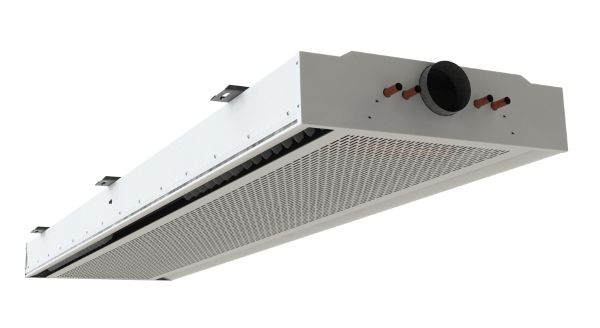FTF Group's Active Chilled Beam "Turn Down" Functionality

Pioneering ahead of other competing Chilled Beam manufacturers, all of FTF Group's Active Chilled Beams feature a "Turn Down Facility" as standard. This unique functionality allows FTF's Active Chilled Beams to operate at significantly reduced air volumes whilst still creating a full Coanda Effect and good waterside cooling effect even at Air Pressures as low as 0.06"H2O (inch of water).
FTF Group Climate® are able to achieve full Coanda and induction of room air even at reduced static pressures as low as 0.06"H2O due to FTF Group's Patented ‘Burst Nozzle Technology’, which is featured as standard on all of their Active Chilled Beams, and also helps to reduce noise levels and encourage greater levels of induction.
FTF Group's Turn Down facility allows room spaces to have lowered fresh air supply volume by simply reducing the pressure, such as when the room is at lower than designed maximum occupancy, whilst still maintaining excellent Thermal Comfort for the benefit of the building occupants and still providing the required waterside cooling.
The above is difficult to achieve with other Chilled Beam manufacturers products that are on the market, as usually when the fresh supply air volume is reduced, to below the designed setting, the air introduced into the room space from the competitors Active Chilled Beam no longer produces the desired Coanda Effect and therefore the air doesn't entrain across the ceiling and instead can dump into the occupied space, causing discomfort / draughts. Also, competitors waterside cooling falls off drastically due to the lack of induction.
Just like the rest of FTF Group's highly efficient product solutions, FTF's Active Chilled Beams have undergone extensive in-house testing allowing FTF Group® to design and develop the optimal method of inducing room air and introducing fresh air to a room without causing draughts or excessive noise.
The ability to Turn Down the fresh air supply pressure, whilst still providing induction and Coanda on discharge maintains good Thermal Comfort and allows for a more energy efficient and flexible way of building management for building owners and facility managers.
This reduces the energy consumption on the other HVAC systems in the building, particularly the Air Handling Units (AHUs), therefore lowering running costs, reducing the buildings operational carbon emissions, and extending the life of the building systems.




